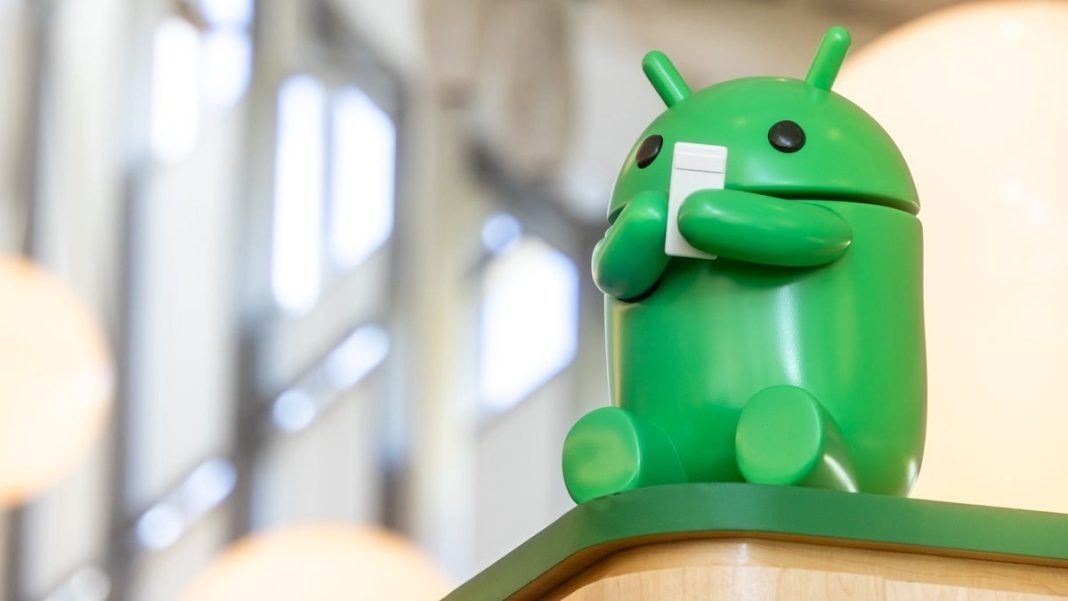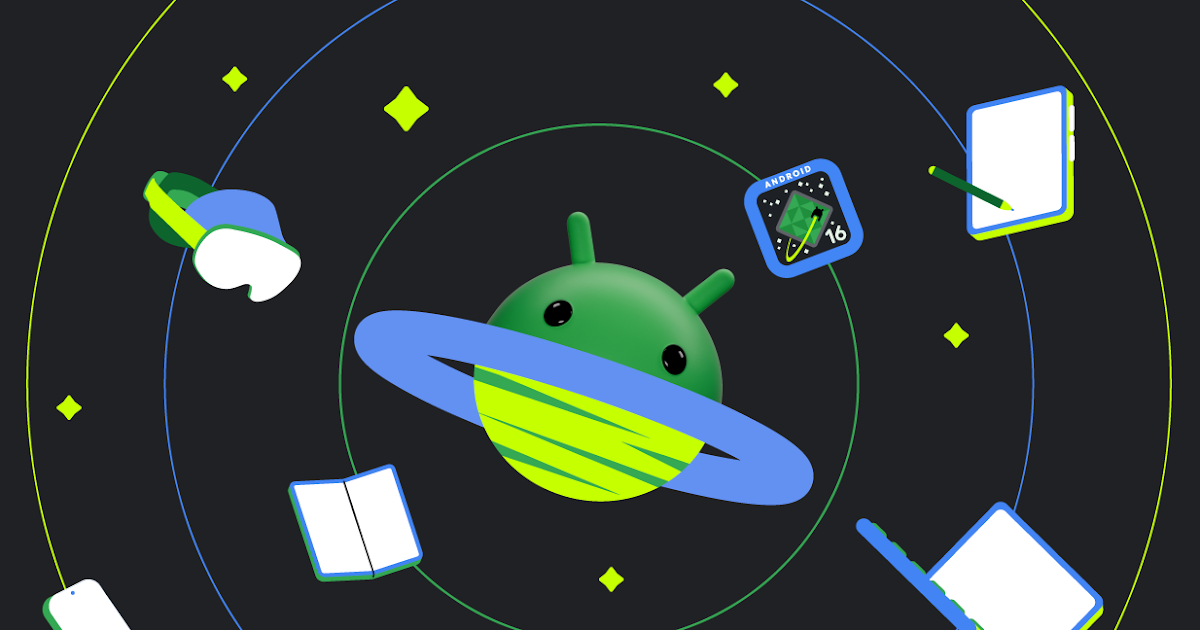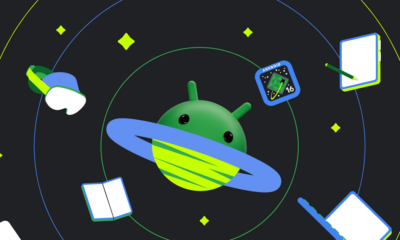Android
Android 16: A fresh look at volume controls, navigation, and Google Photos

The Android ecosystem is constantly evolving, and the upcoming Android 16 release promises to refine the user experience. From subtle UI tweaks to more significant functional changes, Google seems focused on enhancing usability and streamlining core features. Let’s delve into some of the anticipated changes, including a potential volume panel redesign, enhancements to navigation, and a simplification of the Google Photos interface.
A Potential Volume Control Overhaul
One more noticeable change explored in Android 16 is a potential redesign of the volume controls. While Android 15 introduced a collapsible volume panel with distinctive pill-shaped sliders, early glimpses into Android 16 suggest a shift towards a more minimalist aesthetic.
Instead of the thick, rounded sliders of the previous iteration, Android 16 may feature thinner, continuous sliders with simple handles. This design aligns more closely with Google’s Material Design 3 guidelines, emphasizing clean lines and a less cluttered interface.
While some users may prefer the more pronounced sliders of Android 15, the new design offers a more precise visual representation of the volume level. The volume slider itself is also transforming, becoming less rounded with a thin rectangular handle. The icon indicating the active volume stream has been repositioned to the bottom of the slider, and the three dots that open the full volume panel have been subtly reduced in size. The volume mode selector has also been refined, displaying different modes within distinct rounded rectangles.
It’s important to remember that these changes are still under development. Google may choose to refine or even abandon this design before the final release of Android 16. However, it offers an intriguing look into Google is direction for its volume controls.
Predictive Back Comes to Three-Button Navigation
Navigating within Android apps can sometimes be a frustrating experience, especially when the back button doesn’t behave as expected. To address this, Google introduced “predictive back,” a feature that provides a preview of where the back gesture will lead. Initially designed for gesture navigation, this feature is now poised to expand to the more traditional three-button navigation system in Android 16.
Predictive back aims to eliminate the guesswork from navigation by showing a preview of the destination screen before the back action is completed. This prevents accidental app exits and ensures a smoother user experience. While predictive back has been available for gesture navigation for some time, its integration with three-button navigation marks a significant step towards unifying the navigation experience across different input methods.
Early tests show that pressing and holding the back button in three-button navigation reveals a preview of the next screen. This functionality even extends to apps that already support predictive back, such as Google Calendar. While some minor refinements are still expected, such as a preview of the home screen when navigating back from an app, the overall functionality is promising.
This addition is particularly welcome for users who prefer the simplicity and speed of three-button navigation. By bringing predictive back to this navigation method, Google is ensuring that all users can benefit from this improved navigation experience.
Streamlining Google Photos
Google Photos is also undergoing a simplification process, with a key change affecting the app’s bottom navigation bar. The “Memories” tab is being removed, consolidating the interface and focusing on core functionalities.
Instead of a four-tab layout, Google Photos will now feature a cleaner three-tab bottom bar: Photos, Collections, and Search (or the Gemini-powered “Ask” feature). This change streamlines navigation and declutters the interface, making it easier to access core features. The “Memories” functionality itself isn’t being removed entirely; it’s being rebranded as “Moments” and relocated to the Collections tab. This “Moments” section organizes photos from the same event, offering a convenient way to revisit past experiences.
This change reflects a trend towards simpler and more intuitive user interfaces. By reducing the number of tabs and consolidating related features, Google is aiming to make Google Photos more accessible and user-friendly.
Looking Ahead
These changes represent just a glimpse of what’s in store for Android 16. From UI refinements to functional enhancements, Google is clearly focused on improving the overall user experience. The potential redesign of the volume controls, the expansion of predictive back to three-button navigation, and the simplification of Google Photos all contribute to a more polished and intuitive Android ecosystem. As Android 16 continues to develop, we can expect further refinements and potentially even more significant changes. The future of Android looks bright, with a focus on usability, efficiency, and a seamless user experience.
Android
Android 16 adds small but useful changes to status bar and terminal features

Google is working on Android 16, and while big changes are still under wraps, some small updates have already been noticed. These tweaks may not seem major, but they can improve how users interact with their devices.
One of the changes spotted in the Android 16 Developer Preview is the return of the status bar clock to the left side of the screen. This layout used to be common before Android 9, but later Android versions placed the clock on the right. Now, with the new preview, the clock moves back to the left, which could make room for more icons and make the status bar easier to read—especially on phones with notches or punch-hole cameras. However, this change might not be final, as Android is still being tested.
Another interesting update is in the Android terminal tool. A new feature allows users to resize disk partitions without needing a full system reboot. This could be very helpful for developers and advanced users who need to change storage settings quickly. Instead of restarting the device, the system now supports live resizing in many cases, which saves time and effort.
Overall, Android 16 is shaping up with some practical improvements that focus on convenience and better user experience, even in the smaller details.
Android
Android 16 beta adds battery health info, Pixel Fold gets better at detecting opens and closes

Google has released the Android 16 Beta 1 update for Pixel phones, and it brings some helpful new features. One of the key additions is battery health information, which is now available in the settings. Pixel users can now see the battery’s manufacturing date, charge cycles, and overall health score. This can help people understand how well their battery is holding up over time. While this feature is currently hidden under developer options, it might be fully added in a future update.
At the same time, Google is also working to improve the Pixel Fold. With Android 16 Beta 1, there’s a new system that better detects when the phone is opened or closed. This new method uses the hinge angle to more accurately understand the device’s position. Unlike older systems that could be affected by software bugs or slow response times, this new one seems to be more reliable and faster.
These changes are important for people who use foldable phones like the Pixel Fold, as better hinge detection can lead to smoother app transitions and fewer bugs. And for all Pixel users, having detailed battery info can help with managing phone performance and deciding when it’s time for a battery replacement.
Overall, Android 16 Beta 1 focuses on giving users more control and smoother experiences, especially for those with foldables.
Android
Android 16 could bring colorful always-on display to Pixel phones

Google is working on Android 16, and it looks like the update could bring more color to the always-on display (AOD) feature on Pixel phones. Right now, the AOD mostly shows white text on a black screen. But a new setting found in the Android 16 Developer Preview hints at the ability to add colors to this display.
The new feature is called “AOD Preview,” and it includes a switch labeled “Color AOD.” While this setting doesn’t work yet, it suggests that Google might be planning to show colorful content even when the screen is in low-power mode.
This change could make AOD look more lively, maybe by adding color to the clock, notifications, or wallpaper. So far, it’s not clear exactly what will change or how customizable it will be, but the feature seems to be in early testing.
Samsung already has more colorful AOD options on its Galaxy devices, so this update could help Pixel phones catch up. Google often introduces new features first on Pixel devices before making them available to other Android phones.
Android 16 is still being developed, and many features are not ready yet. But if Color AOD becomes part of the final release, Pixel users could get a more vibrant and useful always-on display in the near future.
-

 Apps1 year ago
Apps1 year agoGboard Proofread feature will support selected text
-

 News1 year ago
News1 year agoSamsung USA crafting One UI 6.1.1
-

 News1 year ago
News1 year agoBreaking: Samsung Galaxy S22 may get Galaxy AI features
-

 News1 year ago
News1 year agoSamsung Galaxy S23 Ultra with One UI 6.1 and all S24 AI features revealed
-

 News1 year ago
News1 year agoOne UI 6.1 Auracast (Bluetooth LE Audio) feature coming to many Samsung phones
-

 News1 year ago
News1 year agoSatellite SOS feature coming to Google Pixel phones, evidence leaked
-

 Apps11 months ago
Apps11 months agoGoogle’s fancy new Weather app is finally available for more Android phones
-

 News1 year ago
News1 year agoGoogle Pixel evolves as Europe’s third best selling flagship






